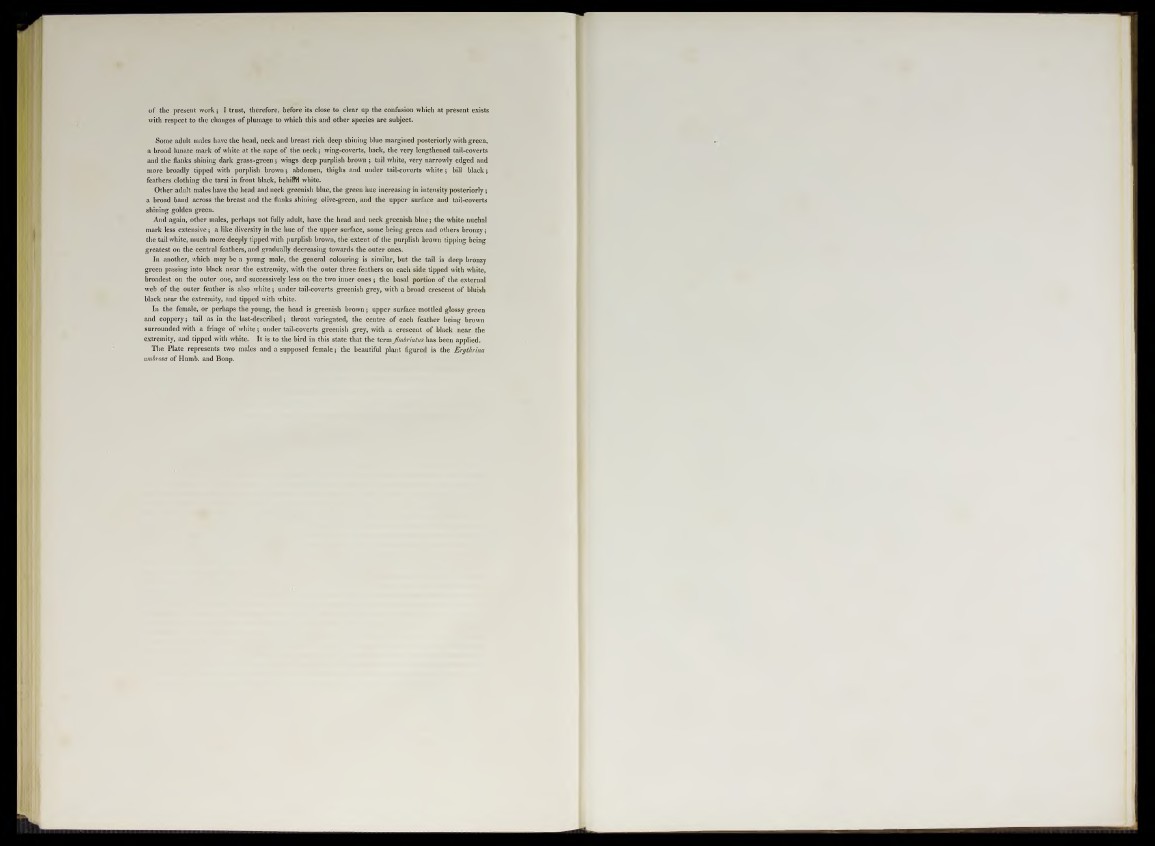
of the present work; I trust, therefore, before its close to clear up the confusion which at present exists
with respect to the changes of plumage to which this and other species are subject.
Some adult males have the head, neck and breast rich deep shining blue margined posteriorly with green,
a broad lunate mark of white at the nape of the neck; wing-coverts, back, the very lengthened tail-coverts
and the ilanks shining dark grass-green; wings deep purplish brown ; tail white, very narrowly edged and
more broadly tipped with purplish brown; abdomen, thighs and under tail-coverts white; bill black;
feathers clothing the tarsi in front black, behifW white.
Other adult males have the head and neck greenish blue, the green hue increasing in intensity posteriorly;
a broad band across the breast and the flanks shining olive-green, and the upper surface and tail-coverts
shining golden green.
And again, other males, perhaps not fully adult, have the head and neck greenish.blue; the white nuchal
mark less extensive; a like diversity in the hue of the upper surface, some being green and others bronzy;
the tail white, much more deeply tipped with purplish brown, the extent of the purplish brown tipping being
greatest on the central feathers, and gradually decreasing towards the outer ones.
In another, which may be a young male, the general colouring is similar, but the tail is deep bronzy
green passing into black near the extremity, with the outer three feathers on each side tipped with white,
broadest on the outer one, and successively less on the two inner ones ; the basal portion of the external
web of the outer feather is also white; under tail-coverts greenish grey, with a broad crescent of bluish
black near the extremity, and tipped with white.
In the female, or perhaps the young, the head is greenish brown; upper surface mottled glossy green
and coppery; tail as in the last-described; throat variegated, the centre of each feather being brown
surrounded with a fringe of white; under tail-coverts greenish grey, with a crescent of black near the
extremity, and tipped with white. It is to the bird in this state that the term fimbriatus has been applied.
The Plate represents two males and a supposed female; the beautiful plant figured is the Erythrina
umbrosa of Humb. and Bonp.